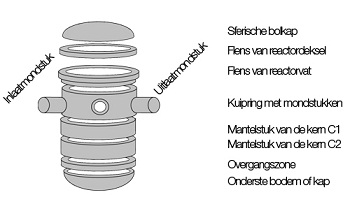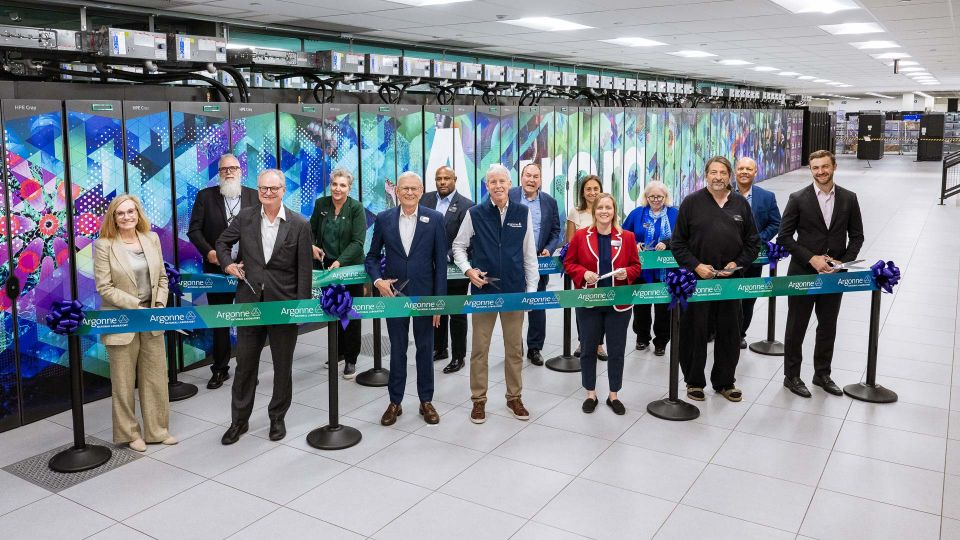Doel-3 in Belgium reports possible pressure vessel flaw
Findings could be significant for other reactors
Ultrasonic testing of a reactor vessel at the Doel nuclear power station in Belgium has revealed what may be tiny cracks, causing the owner-operator group and Belgian regulatory authority-the Federal Agency for Nuclear Control (FANC)-to commence further testing. Belgian authorities said that they would notify other plants around the world using reactor vessels manufactured by Rotterdam Drydock Company, the company that made the reactor vessel used in Doel-3.
Doel-3 was shut down on June 2 for a 10-year in-service inspection requiring examination of thousands of plant components as per local procedure. During the inspections, testing of the reactor vessel was conducted using a new type of ultrasonic detection equipment. This testing-which is focused on high-stress areas near the pressure vessel belt-line or barrel section welds-has turned up what appear to be a number of cracks, according to public statements made by FANC.
FANC's website indicates the discovery of a single larger crack, running parallel with the (curved) surface of the pressure vessel, in the lowest ring section of the body (or barrel area of the vessel). This vessel is of forged ring design; see illustration below.

An illustration from FANC showing the original forged ring sections of the reactor vessel separated for clarity
According to FANC, this single crack is between six-tenths and eight-tenths of an inch long. The crack is not in a direction "normally subject to tension," according to FANC's site, and is thus theoretically of no risk. Reports have been made fairly widely that the cracking discovered in the vessel is due to radiation embrittlement of the steel, but FANC has reported that this crack is thought to be an original manufacturing defect.
According to FANC, this defect is in the body of the forged ring, and not near one of the circumferential welds. Previously, only the weld areas were inspected under such tests in Belgium, but this test sequence for the first time inspected the body areas of the vessel away from welds.
FANC and the plant's operator, Electrabel, have commenced a second round of tests with an older, widely used type of ultrasonic testing equipment in hopes of determining whether the anomalies detected in the Doel-3 pressure vessel are real, or are byproducts of some phenomenon associated with the new testing equipment/method.
FANC has reported to the International Atomic Energy Agency that these events constitute a significance of a Level 1 occurrence on the International Nuclear and Radiological Event Scale-Level 1 is an "anomaly," with no hazard to the public. The scale runs from Level 1 to Level 7, with Level 7 being the most serious threat to the public.
In the meantime, press attention has focused on the fact that the pressure vessel in this plant may not be unique. One other plant in the Netherlands, two in Spain, one in Switzerland, and one in Sweden also have pressure vessels manufactured by Rotterdam Drydock; as many as 21 total plants may be implicated.
There are nine operating plants in the United States that have pressure vessels manufactured by this same firm. Catawba-1, McGuire-2, North Anna -1 and -2, Sequoyah -1 and -2 and Watts Bar-1 have ring forging pressure vessels like that shown above, fabricated of SA-508 Class 2 steel. In addition, Surry-1 and -2 have composite fabrication pressure vessels partly made by Babcock & Wilcox and by Rotterdam Drydock. AEC (now NRC) documents, as well as statements by FANC indicate ten vessels were ordered from this firm, and it is believed that this tenth plant is the unfinished Watts Bar-2.
Rotterdam Drydock entered the field for manufacture of pressure vessels for U.S. nuclear plants in 1969 when a backlog of orders for pressure vessels (among the longest lead time items of the entire plant, and usually second to the turbine-generator as a whole) began to build up. American manufacturers Babcock & Wilcox and Combustion Engineering, the two suppliers of pressurized water reactor pressure vessels for U.S. vendors at the time, were then busily expanding their facilities, but a delay in the startup of Babcock's then-new facility on the Ohio River at Mount Vernon, Indiana, forced the ordering of two vessels in 1969 from Rotterdam Drydock on Westinghouse vendor contracts as substitutions. Eventually, as many as 10 vessels were ordered for U.S. plants from Rotterdam-all for use in Westinghouse PWR plants.
Rotterdam Drydock went out of business in the mid-1980s.
What we don't know
Many facts have yet to be reported that will bear mightily on the decisions to be made about Doel-3's safety. It's important to consider the alloy with which this vessel is made (1), the total embrittlement of that material over the life of the vessel so far due to neutron exposure, the number of pressurized thermal shock cycles the plant may have endured, the number of times the plant has overcooled or operated outside of its normal parameter bands (if any), and more.
One limiting factor for Doel-3, which is a 3-loop PWR supplied by a consortium known as FRAMACECO (consisting of Framatome, ACEC and Cockerill) and which first achieved criticality in 1982, will be the exact composition of its vessel and how that relates to embrittlement, and reduction in strength by any flaws. Pressure vessel steel specifications for reactors were changing during the time this plant was built, and it is not known if the vessel for this plant conforms to later criteria specifying especially low content of copper and phosphorus. (Standards changed under a supplement to the ASME code prior to the time that the vessel for Doel-3 would have been made, and reduced the trace elements that most seriously contributed to higher rates of embrittlement.)
What we do know: Flaw analysis and embrittlement
All reactor pressure vessels experience embrittlement-that is to say, a change in characteristics over time that makes the material less ductile due to neutron bombardment-which largely determines a plant's life span, since the reactor vessel itself is considered non-replaceable.
In terms of what cracking the new crack at Doel-3 might imply, and whether or not PWR vessels have sufficient margin to survive such defects if unfound, we might look to a study performed in France over a 10-year time span in the 1970s and 1980s. This study is described in ASTM STP 819, "Radiation Embrittlement and Surveillance of Nuclear Reactor Pressure Vessels: An International Study." We find the following summation of the French program on page 31 in description of graphed test results:
"The results are compared with the minimum embrittlement as predicted by the U.S. Nuclear Regulatory Commission (NRC) Regulatory Guide 1.99. It appears that in practically all cases the measured embrittlement is less than predicted. In Fig. 1 [not included here] all data points above the curve correspond to steels with phosphorus and copper content greater than 0.08 and 0.8% respectively.The major conclusion of this study is that it is possible to produce steels and welds with relatively low sensitivities to radiation embrittlement if copper and phosphorus contents are maintained at a low level. This is easily achieved for copper content, but seems more difficult for phosphorus."
The clear implication of this French study (cited from among the many other studies available due to the fact that it was, entirely, conducted by the French nuclear industry that participated in the construction of Doel-3) is that there is often a significant margin between predicted embrittlement and actual embrittlement, both of which are less than the minimum allowed. This will be the "playing room," so to speak, that the FANC and Electrabel will have in determining the fate of the plant vis a vis the reduction in local material strength from the defects.
Many other studies have been performed worldwide on the behavior of irradiated reactor vessel steels, not only in terms of their embrittlement and reduction in strength due to neutron exposure but also as to the nature of crack propagation and the ability of the material to arrest crack growth. Should the defects in Doel be found to actually exist, it will be up to FANC to determine whether or not to consult such studies and bank on the safety of the vessel (which has already survived three decades with this flaw, if indeed it is an original defect), to perform more tests, or perhaps even to shut down the plant. Replacement of a reactor vessel has never been performed; these are always disposed of when a plant is decommissioned and dismantled and are considered one of the few "lifetime" components of a nuclear power plant.
Basic analysis for reactor safety includes-as a prerequisite of the determination of the vessel's ability to avoid fracture due to embrittlement and due to temperature changes-a given or assumed initial flaw that is used for calculational analysis. This is not to say that this flaw exists in a (or any) vessel, or that it is allowed to exist; it is simply a basic assumption that provides an extra margin of safety and serves as a launching point for further calculation.
A short while back, this calculational assumption took on a life of its own when activists got hold of a report about the Genkai plant in Japan and assumed that the vessel had a known flaw built in; it did not. The people reporting on this simply did not understand the "pre-existing flaw" assumption made to ensure safety (2).
Possible significance for U.S. plants
How this applies to the ten U.S. plants that have vessels made by Rotterdam Drydock is as follows: What must first be determined is whether or not the defects in the Belgian plant exist or are anomalous. If they do exist, and are determined to be manufacturing defects present since the vessels were made, then it might be logically assumed that such defects might be present in the U.S. built vessels-assuming they were built to exactly the same manufacturing requirements, post-manufacturing quality assurance checks, and handling specifications, and are made of exactly the same alloy with the same trace element content. Further, it would have to be determined that similar inspection for identical flaws has not been carried out in any of the plants. Were all of that to be the case, an inspection of the U.S. vessels might be warranted.
As of this writing, only North Anna-1 and -2, and Surry-1 and -2 in the United States have been publicly identified previously (in Platts, on Friday) as having pressure vessels manufactured by Rotterdam Drydock. Dominion Virginia Power/Dominion North Carolina Power told Platts on August 10 that none of these plants has shown any indication of such cracking in inspections.
In Belgium, another inspection is planned: Tihange-2 also has a pressure vessel manufactured by Rotterdam Drydock that will be inspected in several months.
As should now be clear, the whole situation regarding even the Doel-3 vessel is at this time not yet fully known, and thus any implications for the U.S. plants cannot be accurately made as of yet.
Notes:
(1) For a discussion of the pressure vessel alloys and trace contents, see this link at Atomic Power Review
(2) For background on the Genkai assumption, see this link at Atomic Power Review
Reporting from the following sources has been used in preparing this report: World Nuclear Association / World Nuclear News, Marketwatch, Platts, The Turkish Weekly, Energy Business Review. Documents consulted from US Department of Energy, US AEC (now US NRC), and American Society for Testing and Materials.
______________________________

Davis
Will Davis is the author of the nuclear energy blog "Atomic Power Review," and is a member of the American Nuclear Society. A former US Navy reactor operator, Davis finds his calling to be presenting the public with information about nuclear energy technology and its history.









